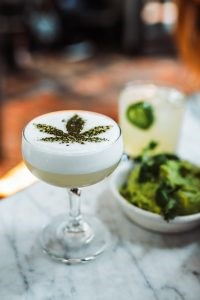This content was originally published by the Longmont Observer and is licensed under a Creative Commons license.
Written by Andrew Zimmerman
Since the legalization of marijuana in Colorado, studies are finding that edible versions (edibles) containing THC (the active ingredient in marijuana) are resulting in an alarming number of emergency room visits.
Recently, the University of Colorado School of Medicine found a "three-fold increase" in emergency room visits for "cannabis-associated" visits at the Anschutz Medical Campus from 2012 to 2016. The objective was "to describe and compare adult emergency department (ED) visits related to edible and inhaled cannabis exposure" ED visits for the time period.
A total of 9,973 visits were studied, all of which fell into the classification of "ICD-9-CM or ICD-10-CM" code (from the International Classification of Diseases, Ninth or 10th Revision, Clinical Modification) for cannabis use. You can read the abstract of the study here.
The study revealed that "the observed proportion of cannabis-attributable ED visits with edible exposure was about 33 times higher than expected."
Amongst the results was the finding that ED visits for inhaled cannabis were more likely to be for 'cannabinoid hyperemesis syndrome' (CHS), which is a condition that leads to repeated and severe bouts of vomiting (a rare syndrome only occurring in daily long-term users).
Emergency department visits for edible cannabis were more likely to be due to acute psychiatric symptoms, intoxication, and cardiovascular symptoms. These results point to a variety of non-life threatening but serious conditions, the fact is clear that people are converging upon hospitals for their ingested cannabis
I had the opportunity to speak with Dr. Kennon Heard, MD,
He emphasized that the effects of marijuana overdosing are not life-threatening, and even in the cases involving young children, there are no known long lasting issues. He noted that edibles need to be safely stored where children cannot get to them. Note that these incidents with young children are limited occurrences as the bulk of patients he sees are a mix of adult Colorado residents and tourists, most of whom have ingested more than they should have and feel the need to go to the ER.
I asked him what his message is to people about consuming edible marijuana. He said, "Start slow, and protect the children." He added that some exaggerate the
Whether real or perceived, the sometimes overwhelming sensation and paranoia associated with cannabis use causes great anxiety for the user, who can wholeheartedly believe that they are in medical distress, be it a heart attack or other concern, and this requires attention.
As described on
Typically what is seen with these "green-out" cases is nausea and vomiting, which paramedics

These edibles come in many forms, from baked goods to beverages to capsules. As we have learned, a large part of the challenge with edibles is dosage and dosing. As everyone is different it is up to each of us to take responsibility to determine what our correct dosage is.
Typically measured in milligrams of THC, the strength of the edible plays a major factor in the user experience. To add to the dosage challenge is the fact that ingested marijuana takes longer in general for the euphoric feeling to take effect, so many times and especially with novice users, they ingest some and do not wait long enough for the effect so they eat more, and this is problematic.
People in the cannabis industry state that there are no real dosage guidelines. They suggest that users take a small amount and then wait at least an hour to see how strong the effect is on the individual. Most of the time, according to people in the medical and cannabis industries, users will feel the effects wear off in a few hours, especially when the user remain hydrated. However, medical professionals encourage users to call 911 or visit an emergency department if a medical emergency exists.


